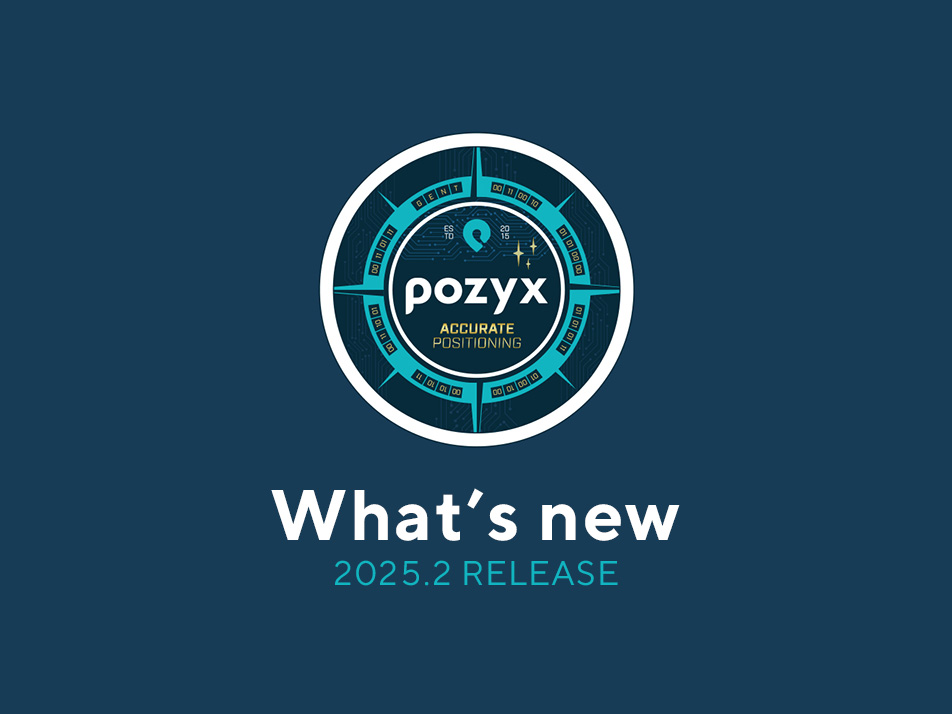2021.3 Enterprise Release
Pozyx's third 2021 software release focuses on Triggers.
Triggers generate events that launch whenever a condition (based on the location awareness of assets) is fulfilled and convert these into automatically generated actions such as alerts, notifications, or status updates.
The Pozyx RTLS generates xyz data streams, which contain vast amounts of data. By introducing the use of Triggers, the system funnels and narrows down the data influx to create a limited set of location data that are business-relevant and translate into events.
How do Triggers and Events work?
The Triggers are launched from geo-location conditions of tracked/tagged assets, such as when a tagged asset enters, exits or remains in a specific fence (digitally geo-fenced area). The generated events can be defined as alerts (push messages, emails, warning lights), as actions (emergency stop, shut down of equipment) or as creation of support or intervention tickets. The Trigger mechanism is fully configurable and can be integrated in a flexible way.
Triggers and integration
Within an industrial context, triggers can easily interact with PLCs and existing manufacturing environments, at SCADA level or in MES and ERP systems. The Trigger feature reduces the effort of manual programming and simplifies the implementation of value stream mapping, safety policies, quality validations and efficiency checks.
More info on industrial automation, integration and connectivity.
Discover the Pozyx Platform
The Pozyx Platform brings indoor and outdoor positioning data together to provide full asset visibility, automation and location-based insights for logistics and manufacturing.
Pozyx PlatformEasy to implement - no coding
Pozyx offers a wide variety of Triggers to capture business logic in production environments. Their configuration is easy and can be defined on individual tags, groups of tags or based on specific zones or geofences.
The Triggers combine accurate location data with additional in/out fence information and are specified according to the omlox API definition.
The list of Pozyx Triggers remains under continuous development and continues to grow based on customer requests - some examples of typical and most used Triggers below:
Positioning triggers
- Asset enters or exits a zone
Business zone triggers
- X assets or less than X assets in a zone
- Zone remains empty for X seconds
- Asset longer than X seconds in a zone
- Tag leaves zone before X seconds
- Tag is not moving in a zone for over X seconds
- X tags are active in same zone
Movement-based triggers
- Tag is standing still for X seconds
- X tags are within Y meters of each other (collision event)
- Average speed over X seconds is higher than Y km/h
Sensor triggers
- User presses a tag button
- Tag battery level is below X%
Build your own Trigger use case
With the Triggers defined, the use case comes to life by adding events.
Events initiate the alert management system and generate warnings and notifications whenever any of the trigger conditions are met.
Additional new features and fixes
- Updated Simulator Tool to be compatible with Triggers and set-up and test Trigger scenarios and their business logic
- New load capacity improvements, increasing the amount of positioning estimates by factor 3 on the same hardware, up to 2500/sec on the standard Pozyx gateway
- Improved Anchor Planning tool
- Improvements in anchor and tag management
- Improved positioning for idle assets
- Usability improvements to 'sync zones' allow the reduction of computational loads on large setups
- Stability and usability improvements to multi floor settings
- Minor general improvements & bug fixes

Written by
Samuel Van de Velde
CTO & Co-Founder at Pozyx
Samuel is an electrical engineer with a strong interest in location technology. Skilled in Entrepreneurship, Public Speaking, Product Management, internet of things (IoT), and Machine Learning. After graduating In 2010, he joined the Department of Telecommunications and Digital Information Processing (TELIN) to pursue a Ph.D. degree on the topic of collaborative indoor localisation. In 2015, he founded the spin-off company Pozyx out of that research.









